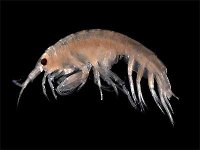THE non-native Dikerogammarus villosus, commonly known as the killer shrimp, has now been discovered in various locations on the Broads as well as in Grafham Water in Cambridgeshire, and is causing anxiety.
 The fresh water shrimp has now been found in Barton Broad, and a ‘Check Clean Dry' system is being encouraged for boaters using equipment that has been in contact with the water, to prevent its spread.
The fresh water shrimp has now been found in Barton Broad, and a ‘Check Clean Dry' system is being encouraged for boaters using equipment that has been in contact with the water, to prevent its spread.
Working together
The Environment Agency, Natural England and the Broads Authority are currently working together to investigate the presence of the shrimp in the Broads, including its current population and spread. This species is an aggressive predator with a high rate of reproduction making it an extremely successful invasive.
If the shrimp became established and widespread, as other invasive species such as floating pennywort and Signal crayfish have, it could threaten populations of native species. Although the shrimp only grows to a maximum of 1.2 inches it feeds on insect life including our native species such as damselfly nymphs, water boatmen and small fish. It has also been observed to replace our native shrimp.
